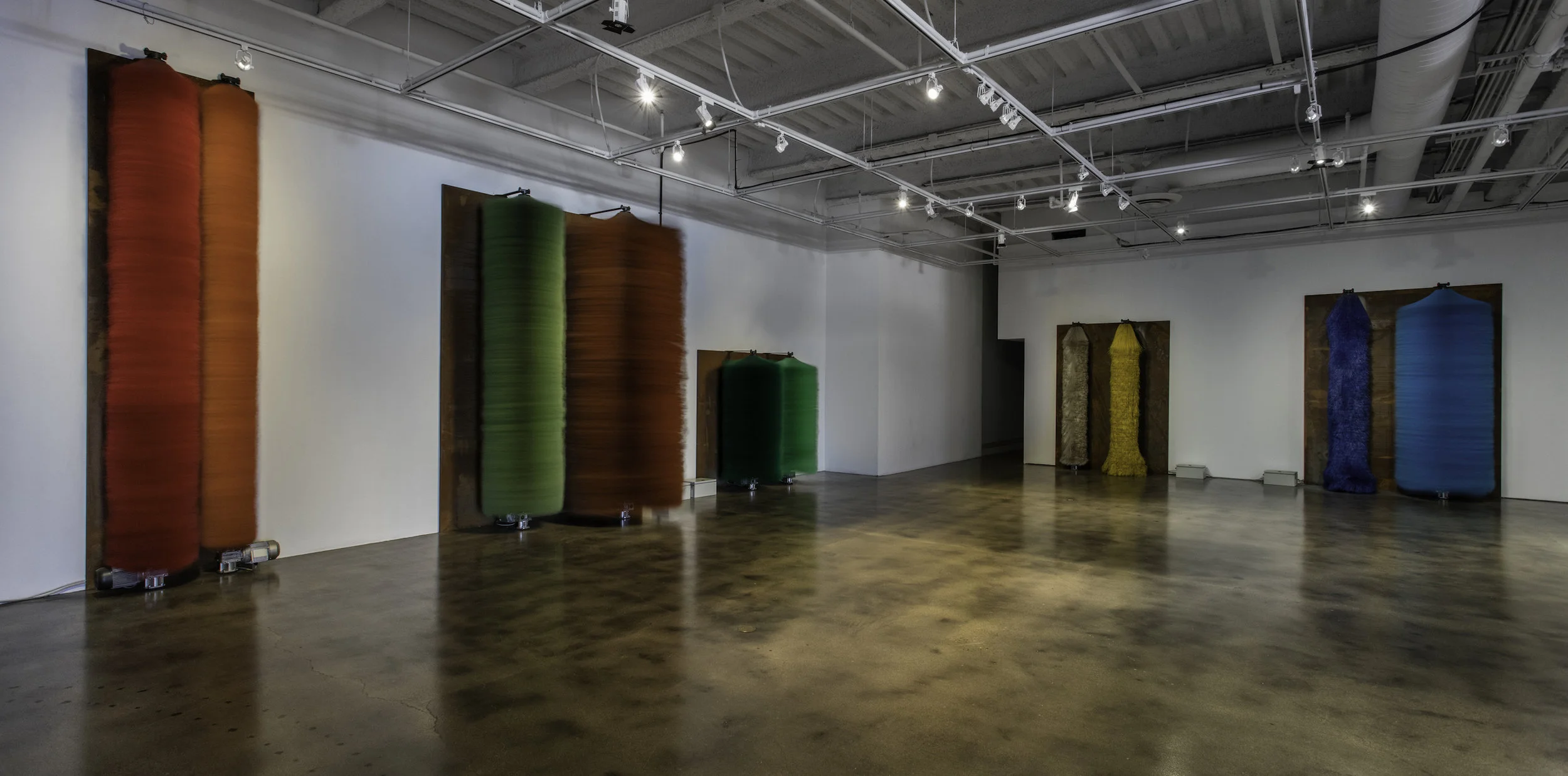Kota Ezawa: The Crime of Art, Interview
Oakland-based artist Kota Ezawa’s solo show, “The Crime of Art,” at Museum of Contemporary Art, Santa Barbara, draws the viewer into a bright, graphic, color-block version of reality, in an unfolding study of theft—in the art world and as part of the creative practice.
In the series, “The Gardner Museum Revisited,” Ezawa replicates each of the thirteen works stolen from the Isabella Stewart Gardner Museum, Boston in 1990, including masterpieces by Degas, Manet and Rembrandt. Ezawa infuses his stylized facsimiles with a pop veneer that short circuits the intersection of high and low culture, broadening the cultural connectivity of the images, while deepening the divide between the original and its reproduction.
The show's title piece, “The Crime of Art,” is an animated film in Ezawa’s signature style, distilling original images to a glowing field of minimalist, shadowless forms, seamlessly stringing together every cinematic museum art heist that the artist is aware of. And while one strangely falls beholden to Kota’s worlds that lack the sensuous nuance of undulations—the furrows of an upper lip or the pleats of a black dress—the viewer is captivated by the precise retracing of each heist—frame-by-frame—triggering a sense of the subtle funhouse mirrors in art: originality, reproducibility and appropriation.
On the occasion of his solo show at MCASB, LUM Art Zine interviewed Kota Ezawa.
LUM Art Zine: Tell me about where you are from and what your childhood was like?
Kota Ezawa: I grew up in a rural area near the Black Forest in SouthWest Germany. It was a pretty normal childhood. I was into the things most other kids liked as well, playing soccer, being outdoors, later listening to and playing music and getting buzzed.
My father had immigrated from Japan in the late fifties. My siblings and I were the only half-Asians in an almost completely German community, so we stuck out. That was a bit exhausting at times.
What was your path to becoming an artist?
I loved drawing from an early age. Below is a drawing I made in preschool of my preschool teacher getting married. I was pretty shy and making drawings helped me to connect with other kids and adults.
Courtesy Museum of Contemporary Art Santa Barbara, Photo: Brian Forrest.
Can you describe the process you use in creating your current body of work and the rationale for this technique?
Over the past 15 years I developed a style of drawing where I manually trace over existing films, videos, photographs and paintings. The process has changed gradually. My early drawings were very reduced and minimal. Over time they have become more elaborate. In a way, I’m creating some kind of ghost image of the original. I found that these ghost images emit some kind of power that I’m trying to tap into.
Why are you drawn to art theft as a central theme?
Art theft has caused devastating losses to museums and private collections but there is also a positive effect to this ongoing phenomena. Many people that don’t care about art otherwise learn about artworks when they are stolen, when newspapers and television-news show images of the loot.
My own process has been described as a form of appropriation which is close to the act of stealing. While I don’t think I take anything away from anybody, I do feel some kind of affinity to the mindset of a thief.
Looking at your body of work, the viewer is drawn into a bright, graphic color-block version of reality. Is this alternate universe a darker or lighter version of the world (or art world) we inhabit?
It’s a lighter version.
Courtesy Museum of Contemporary Art Santa Barbara, Photo: Brian Forrest.
What are the questions that you hope your work asks?
Can copies be more beautiful than originals? Is less really less?
At what point do you know you’ve had an idea that is worth bringing forward? Can you describe what a moment of inspiration or clarity feels like for you?
It feels like drinking a triple espresso. It’s a very energizing feeling.
Do you have an idea where your work is headed in the future?
I have an idea but I’m certain this idea will change. The twists and turns of an art practice are what keep it engaging and what makes me want to continue.
What artists have had the greatest influence on your work?
Andy Warhol, Pippilotti Rist, Nayland Blake, George Kuchar, Gerhard Merz, Kraftwerk, Prince, Lady Gaga.
What is the art piece that you’ve created that you most like?
It’s always the one that I’m in the process of creating that I like the most. For the ones I have already made, I let others decide what’s likable or not.
Describe yourself as an artist in three words.
not not new
Courtesy Museum of Contemporary Art Santa Barbara, Photo: Brian Forrest.
Childhood drawing by Kota Ezawa. Courtesy of the artist.
Photograph of Kota Ezawa by Debra Herrick.
“Kota Ezawa: The Crime of Art” is curated by Irene Hofmann with SITE Santa Fe and the Mead Art Museum and is on exhibit from Nov. 10, 2018 to Feb. 3, 2019, at the Museum of Contemporary Art Santa Barbara.
www.mcasantabarbara.org
www.hainesgallery.com
www.cgrimes.com
www.sitesantafe.org
www.amherst.edu/museums/mead
•
Want to write for Lum Art Zine? Contact editor@lumartzine.com.
Interested in how you can support Lum Art Zine? We are currently seeking sponsors for Lum Art Zine’s Summer 2020 issue. To get involved or to make a donation, contact editor@lumartzine.com.





